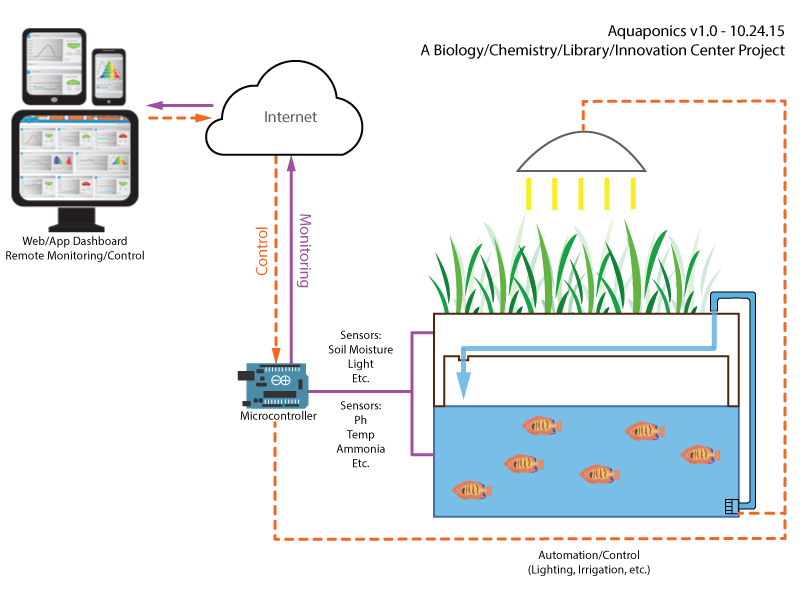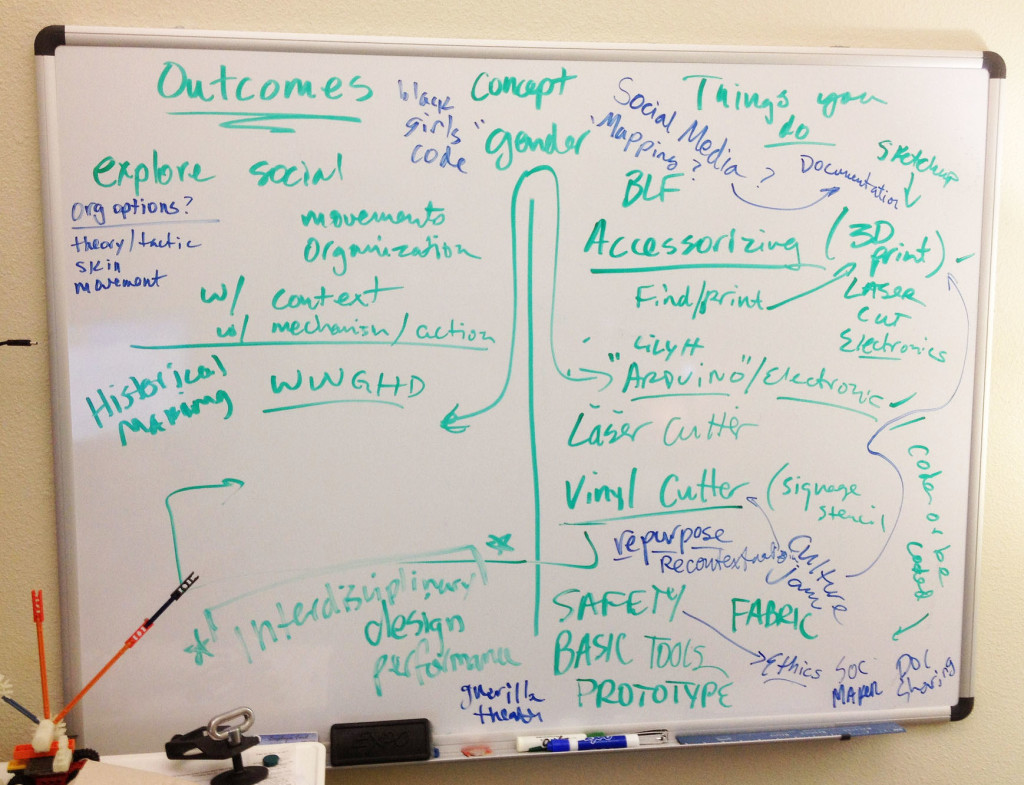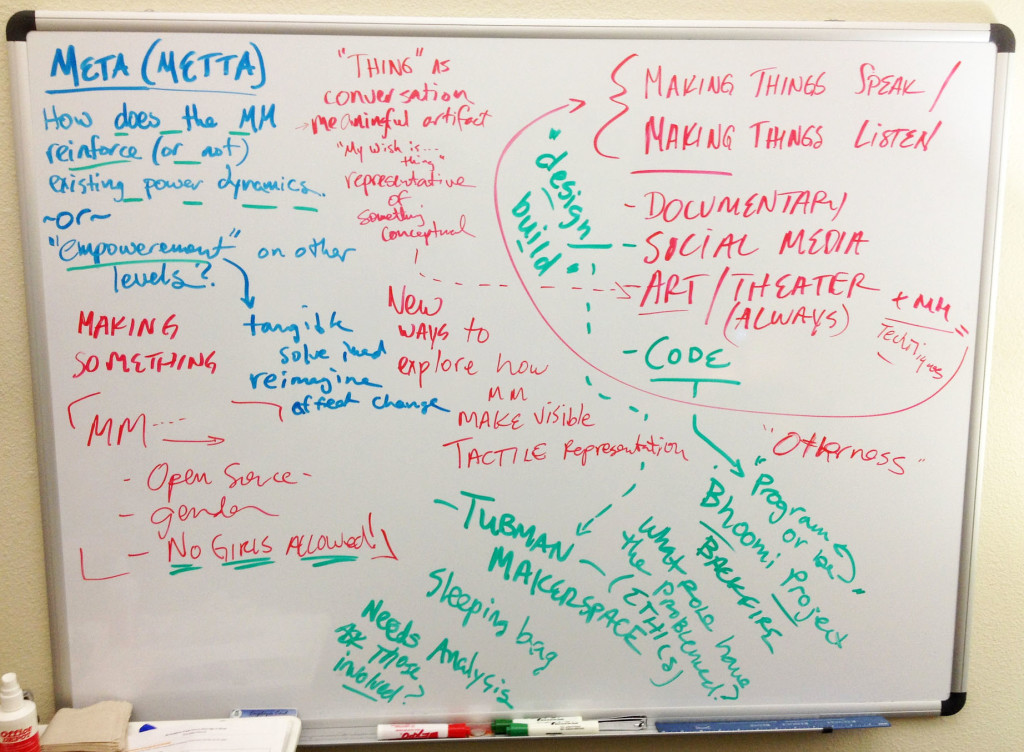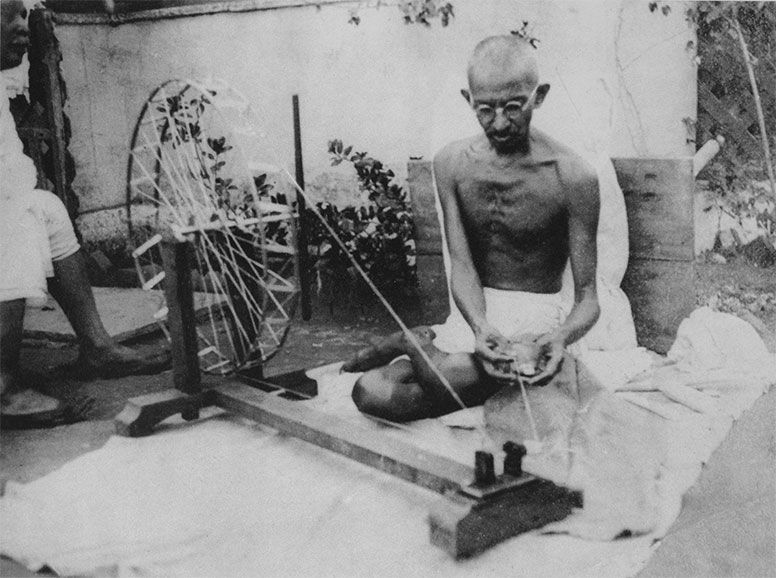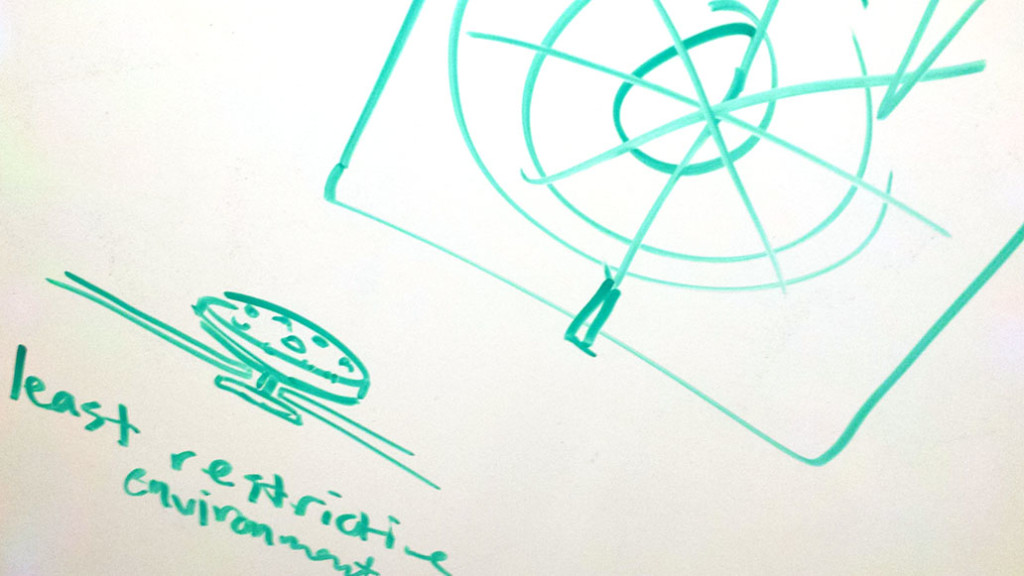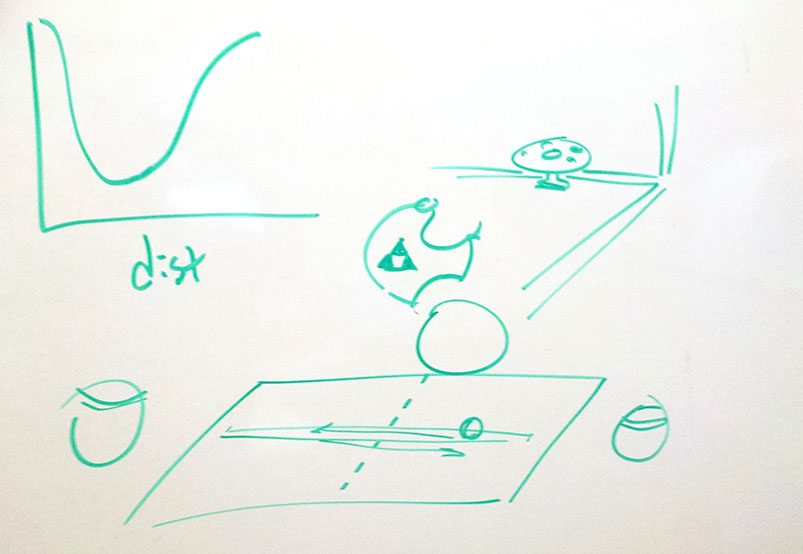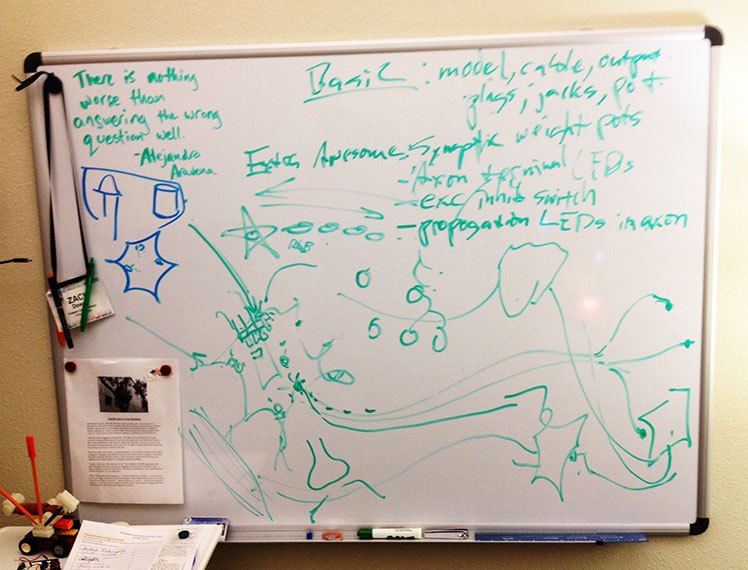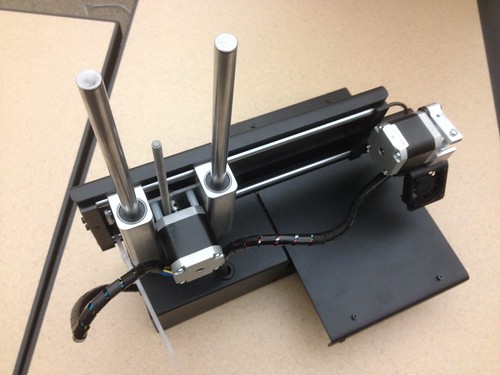I met last week with students from the FLC++ and Math & Engineering clubs to talk about a joint project involving quadcopters. Lots of good ideas in the room, and it sounds like a good project is taking shape!
Faculty from biology, chemistry, and FLC’s library are working with the Innovation Center to design an aquaponics system. In its simplest form, an aquaponics system is fish on the bottom, plants on the top. We’d like ours to be networked, with remote monitoring and control. Here’s a conceptual diagram:
It is perhaps easier to understand how making applies to the STEM/STEAM disciplines than to disciplines like sociology. In an effort to foster a Making Across the Curriculum ecosystem at the college, it’s important to find ways to empower faculty and students in every discipline with the tools and technologies, and perhaps more importantly the philosophy and ethos of the maker movement. To that end, Diane Carlson (Professor of Sociology) and I have been working on developing a sociology course called “Making Social Change.” Here’s a draft description:
Empowerment through the development of technological skills and access to tools is and will continue to be a significant issue in social justice work and social change. In this interdisciplinary course, students will explore social change through movements, organizations, and groups and the ways those entities use, create, modify, and improve tools and technologies to support and drive change. Students will analyze the contexts and tactics of these movements and synthesize their discoveries with hands-on experience using tools and technologies of the maker movement to develop projects designed to address social, environmental, and economic needs.
Below are artifacts of the two most recent brainstorming sessions:
Gandhi was a maker.
Max Mahoney (Professor of Chemistry) had an idea about using the Innovation Center’s 3D printer to create some manipulatives to help demonstrate to chemistry students concepts of atomic bonding. Something like this:
Here’s what Max has to say about it:
The nature of chemical bonds is rooted in complex physical forces. These forces result in atoms being both attracted and held apart at a specific distance. We hope to develop a hands-on model for students, which conveys this important chemical information. Currently available designs of molecular model kits allow the construction of complex molecules in 3 dimensions, but do a poor job of representing the exact nature of each chemical bond. Our goal is to create a model that will allow students to feel the chemical bond and see the bond lengths. The recently discovered ‘inverter magnets’ have the property of both repelling and attracting each other, so that the atoms seem to hold each other in a ‘tractor beam.’ The distance they are separated represents the bond length.
Initial designs will focus on demonstrating the principle of bond length and bond vibration between two atoms. Enclosures for the inverter magnets are currently being 3D printed and their shapes optimized. These models use strong neodymium magnets so that students can feel the significant push and pull of the two ‘atoms.’ Magnets of different strengths will result in varying degrees of bond strengths (and vibrational rates), which can be measured by the student using force gauges.
Subsequent designs of these models will demonstrate each atom’s unique bonding pattern. Specialized cases for the inverter magnets will be 3D printed to mimic an atom’s ability to form multiple bonds.
The key aspect of these models is that the magnets do not touch and can be made to vibrate at a specific frequency so that the model is dynamic. Currently, students are taught these concepts with either static models, or with video animation. The strength of our model lies in the ability for students see and feel tangible objects displaying atomic principles on a macro scale.
We did some design talking/drawing:
Max went home, bought some magnets, taught himself SketchUp, and has printed a few different prototypes.
Stay tuned…
Sean Fannon (Professor of Psychology and we think coiner of the phrase “arduineuron”) and I have been kicking around ideas for a project consisting of 3D printed neurons and LEDs, all controlled by Arduino. It’s early stage, but I was able to get a little prototype up, using this model of a neuron (CC BY-NC-SA by speborde) and this Arduino sketch/schematic from spikee.io. The neuron starts firing (indicated by the pulsing of the LED) as the potentiometer is rolled up.
The general idea is to create an interactive network of these for use in the Psychology classroom.
Using the prototype above as a starting point, Sean and I sat down to further define the project.
Next steps include securing some electronics, and designing and printing some snap-together dendrite interfaces. I’m also in conversations with Jennifer Kraemer (Professor of Early Childhood Education) to see if we can find a way to also demonstrate the concept of myelination, which Jennifer talks about in her Child Development courses. This neuron project might also come into play. Interdisciplinary goodness!

Spent the evening or May 7th at a recognition event for donors to the college. The Innovation Center has been a direct recipient of Falcon Grant monies – that’s how we got the Printrbot – and an indirect recipient in partnership with Geosciences, enabling us to upgrade to a better quadcopter for dolookdown.org. I had the opportunity to explain the various projects, and to talk to Foundation members and donors about our plans to remake the IC as a makerspace. Several seem very excited about the idea!
From the White House:
“We are excited to announce that the White House will celebrate a “Week of Making” this summer from June 12-18!”
Read more: https://www.whitehouse.gov/nation-of-makers
Attended a Folsom Makers Meetup (http://www.meetup.com/Folsom-Makers/) meet and greet Tuesday night at a local Folsom watering hole. I’ve been to another of the group’s events, a showcase night at Entrepreneurs Campus (http://www.velocityvc.com/entrepreneurs-campus-ignite-accelerate-capitalize/), also in Folsom. Made some good contacts, and had the opportunity to talk a bit about the college and our makerspace ambitions. Lots of talent and energy in this town. Hoping to bring some of that energy to FLC.
Students, faculty and staff gathered for a presentation about 3D printing. You can check out the slides here. Lots of enthusiasm in the room, and lots of support for a makerspace.


